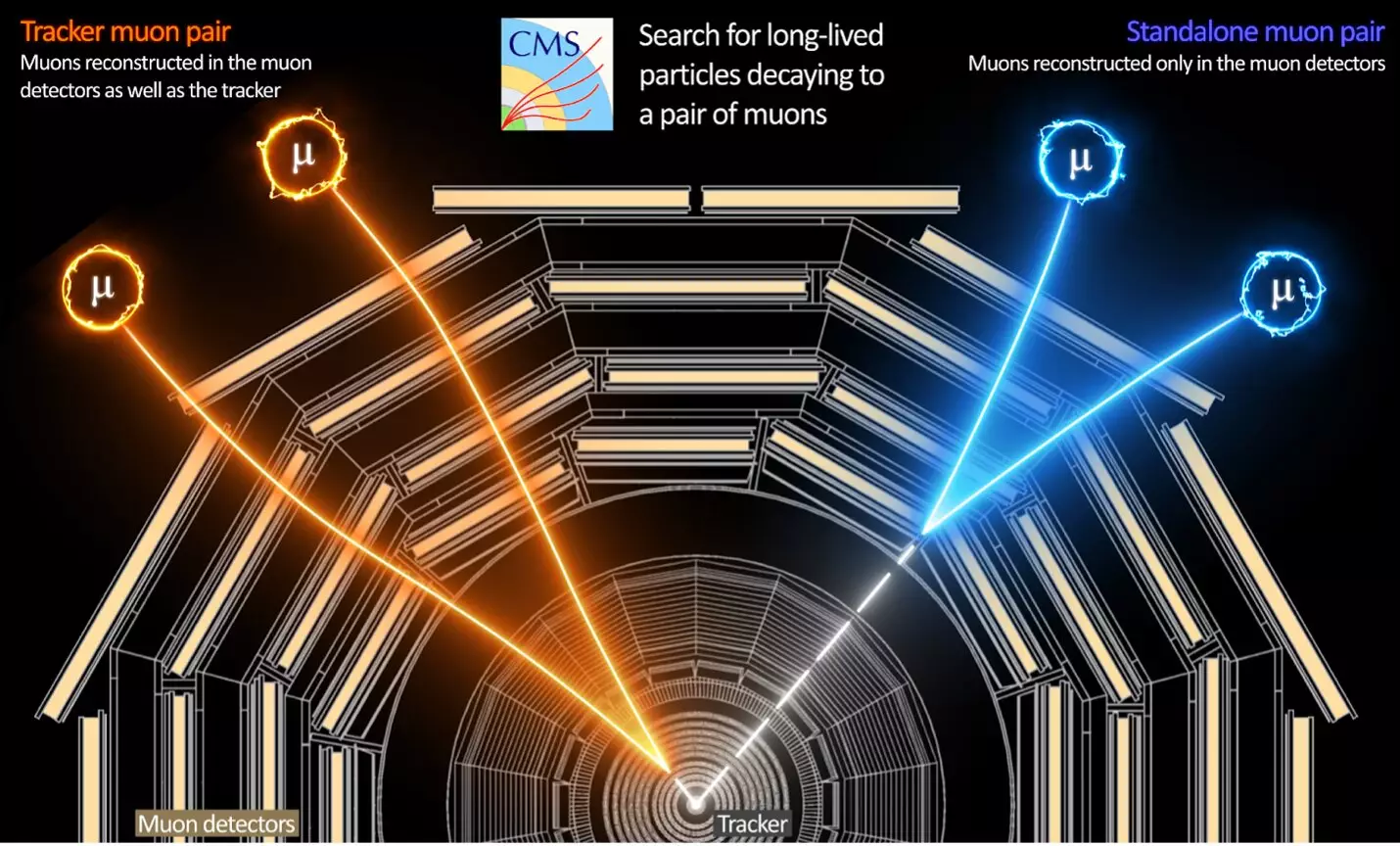The CMS experiment at the Large Hadron Collider (LHC) has made significant progress in its search for new physics during Run 3. In a recent study, researchers examined the possibility of “dark photon” production in the decay of Higgs bosons. Dark photons are intriguing particles that have long lifetimes and do not conform to the Standard Model of particle physics. This article delves into the details of the CMS experiment’s findings and the implications for our understanding of the universe.
Dark photons, unlike the familiar ones associated with electromagnetic interactions, have distinct properties. They possess an average lifetime exceeding a tenth of a billionth of a second, making them significantly long-lived in comparison to other particles produced at the LHC. Additionally, dark photons fall outside the scope of the Standard Model, which encompasses our present understanding of the fundamental constituents of the cosmos. This motivates scientists to conduct searches for phenomena that go beyond the boundaries of this model.
To narrow down the search area for dark photons, the CMS experiment devised a more refined trigger system. The trigger system determines which collisions should be recorded for analysis, as the vast volume of data generated at the LHC demands efficient selection processes. The CMS team introduced a non-pointing muon algorithm to improve the detection of displaced muons in the detector. These muons originate from dark photons that have moved away from the collision point before decaying. By enhancing the trigger system, CMS has significantly increased its chances of finding evidence of dark photons should they exist.
Run 3 of the LHC, which began in July 2022, offers an improved platform for exploring new physics. With higher instantaneous luminosity, more collisions occur, providing researchers with a larger dataset for analysis. However, due to data storage limitations, only a fraction of these collisions can be recorded. The CMS experiment’s trigger system plays a vital role in selecting the most interesting collisions to capture. The advancements in the trigger system between Runs 2 and 3 have allowed CMS to achieve notable results using only a third of the data previously required.
Implications and Future Prospects
The CMS experiment’s refined trigger system and the enhanced ability to detect displaced muons open up exciting possibilities for further exploration of physics beyond the Standard Model. With ongoing improvements in data analysis techniques, scientists aim to uncover evidence of dark photons and elucidate the mysteries that lie outside the realm of the currently accepted understanding of the universe. By leveraging the immense capabilities of the LHC and the CMS detector, researchers are poised to make significant breakthroughs in our quest for knowledge.
The CMS experiment’s search for dark photons in the decay of Higgs bosons represents a seminal exploration into new physics. By refining the trigger system and incorporating advanced detection algorithms, researchers have significantly increased their ability to capture relevant data and search for exotic particles. As Run 3 of the LHC progresses, the CMS team remains dedicated to pushing the boundaries of our understanding of the universe and unraveling the secrets that lie beyond the Standard Model. The journey toward uncovering the hidden particles that constitute the fabric of reality continues, and the CMS experiment is at the forefront of this quest.



Leave a Reply